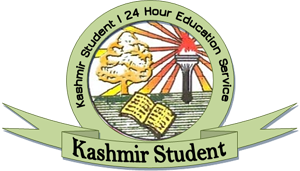Syllabus for PG Entrance in Economics at Department of
Economics University of Kashmir w.e.f session-2013
Unit I: Some Basic concepts
Introduction to Number System:
Gradient and Equation of Straight Line; Parabola; Rectangular Hyperbola; Types
of Equation, Functions—Different Function in Economics; Derivatives and their
evaluation; Rules of Differentiation; Marginal Concepts and Elasticities.
Unit II: Measures of Central
Tendency and Dispersion
Measures of central tendency—
Arithmetic Mean, Median, Mode, Geometric Mean Measures of dispersion— Mean
Deviation, Standard Deviation, Coefficient of Variation, Coefficient of
Skewness Karl Pearson’s Method, Coefficient of Skewness based on moments;
Unit III: Economic
Development: Concept, Measurement and theories;
Concept of economic growth and
development; Sustainable development; Characteristics of an under-developed
country; Measurement of development— GNP, PCI, PQLI and HDI. Classical theory
of economic development; Marxian theory; Schumpeter’s theory; Nurks’s theory of
disguised unemployment; Rostow’s stages of economic growth; Big-Push theory.
Unit IV: Trade, Choice of
Techniques and Development Planning
Role of International trade in
economic development; Labour intensive technique and capital intensive
technique; Meaning of economic planning; Need for planning in Under-developed
countries; Centralized and decentralized planning;
Unit V: Consumer and
producer Behavior
Cardinal utility, Consumer’s
equilibrium; Ordinal utility, Indifference curve, Marginal rate of
substitution, Properties of indifference curves, Budget line, Consumer’s
equilibrium; Elasticity of Demand— Price, income and cross elasticity.
Production function—Homogeneous and linear homogeneous production functions;
Law of variable proportions; Returns to scale; Isoquants, Marginal rate of
technical substitution, Properties of isoquants, Iso-cost line, Equilibrium of a
firm, Expansion path.
Unit VI: Market Structure
and Factor Pricing
Short-run and long-run
equilibrium of a firm and industry under perfect competition and monopoly;
Monopolistic competition. Duopoly and Oligopoly Distribution— Concept, Marginal
productivity theory of distribution; Wages— Modern theory of wages, Wage
differentials; Rent—Ricardian Theory; Profits— innovation and dynamic Theory;
Keynesian theory of interest.
Unit VII: Indian Economy—Agriculture Development and Industrial Performance
Natural
Resource Potential; Trends in national income; Planning strategy and
performance;
Agriculture—
Trends in production and productivity; New agriculture strategy; Agriculture
marketing and price policy. Review of industrial development during planning period—
Public sector, private sector and joint sector; Industrial policy resolution—
1956 and 1991; MRTP Act; Competition Act 2002; FERA and FEMA; Disinvestment
Strategy.
Unit VIII: Foreign Trade,
Balance of Payments and J&K Economy
Foreign Trade upto 1990—
Composition and direction, New economic reforms and growth of foreign trade,
Changes in Composition and direction of foreign trade since 1991;
Export-promotion measures; Foreign direct investment and balance of
payments—Trends and magnitude; J&K Economy; Structural transformation; Role
of forests and hydropower potential;; Land reforms; Industrial and tourism
development; State finances.
Unit IX: National Income and
Employment: Classical Theory
Concept of national income,
Measurement of national income—various methods; Circular flow of income and
expenditure— Two-sector, three-sector and four-sector model; Say’s Law of
markets; Wage-Price flexibility and full employment; Classical Model—with and without
saving and investment; Quantity theory of money
Unit X: Income and
Employment (Keynesian Theory), Inflation and Business Cycles
Keynes’ criticism to Classical
theory of income and employment; Keynes theory of employment— Aggregate supply
and aggregate demand analysis; Money-wage rigidity; Consumption function—
Absolute and relative versions; Factors influencing consumption; Inflation—
Concept and types; Causes and consequences; Demand pull and cost push theory;
Measures to control inflation. Business cycle— Concept and phases; Theories of
business cycle— Monetary and over-investment theory.
Unit XI: Concept and Role of
Money, Financial Institutions and Markets
Money— Meaning, functions and
kinds; Characteristics of good money; Gresham’s law; Role of money in mixed
economy,. Commercial bank—Functions; Credit creation mechanism; Central
bank—Functions; Quantitative and qualitative methods of credit control
Unit XII: Public Finance
& International Trade
Public Finance— Meaning and
scope; Distinction between public and private finance; Principle of maximum
social advantage; Public expenditure— classification; Taxation— Types and
incidence; Budget and its types; Inter-regional and international trade;
Theories of Absolute and Comparative Advantage; Free trade vs protection;
Tariffs and quotas— Partial equilibrium analysis; Balance of payments—
Structure; Measures to correct disequilibrium in BOP.
Basic Reading List:
Quantitative Methods In
Economics
1. Schaum’s Outline (2005), An
Introduction to Mathematical Economics, Tata McGraw Hill, New Delhi.
2.
R.G.D Allen (1974), Mathematical Analysis for Economists, Macmillan
Press, London.
3. Elhance & Elhance
(2009), Fundamentals of Statistics, Kitab Mahal, New Delhi.
Development Economics
1.
A.P. Thirlwal (2003), Growth and Development, Macmillan Press Ltd., U.K.
2.
Todaro & Smith (2005), Economic Development, Longman, London.
3. M.L. Jhingan (2006), The
Economics of Development and Planning, Vrinda Publications, New Delhi.
Microeconomics
1.
A. Koutsoyiannis (2006), Modern Microeconomics, Macmillan Press Ltd,
London.
2.
D.N. Dwivedi (2007), Microeconomics, Tata McGraw Hill, New Delhi.
3. H.L.Ahuja (2007), Advanced
Economic Theory— Microeconomic Analysis, S. Chand & Company, New Delhi.
Indian and J&k
EconomyEconomy
1. Misra & Puri (2008), Indian Economy,
Himalaya Publishing House, New Delhi.
2. Datt & Sundharam (2006), Indian Economy, S.
Chand & Company, New Delhi.
3. Uma Kapila (2008), Indian Economy— Performance and
Policies, Academic Foundation, New Delhi.
4. Jasbir Singh (1998), The Economy of J&K,
Radhi Krishnan Anand & Co., Jammu (J&K).
5. Sadhu & Singh (1984), Jammu & Kashmir
Economy, Trikuta Publishing House, Jammu (J&K).
Macroeconomics
1.
Edward Shapiro (2008), Macroeconomic Analysis, Galgotia Publications,
New Delhi.
2.
D.N. Dwivedi (2007), Macroeconomics— Theory and Policy, Tata McGraw
Hill, New Delhi.
3. H.L. Ahuja (2006), Macroeconomics—
Theory and Policy, S. Chand & Company, New Delhi.
Money, Banking, Finance And
International Trade
1.
Frederic S. Miskin (1997), Financial Institutions and Markets, Addison
Wesley, USA.
2.
S.B. Gupta (2001), Monetary Economics, S. Chand & Company, New
Delhi.
3.
S.K. Singh (2004), Public Finance in Theory and Practice, S. Chand &
Company, New Delhi.
4. Robert J. Carbaugh (2004), International Economics,
Thompson Publishing Company, New York.




